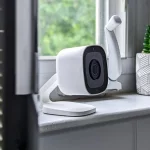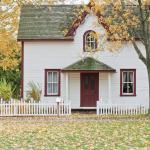How to Choose the Most Fireproof & Secure Safes
Fire damage remains one of the leading causes of personal property damage and loss. The National Fire Protection Association reported 484,500 structure fires in 2011, resulting in $9.7 billion in property damage (1). Statistics like these highlight the need to protect the things you treasure most. Many documents, heirloom jewelry, and electronic media files are irreplaceable if they are destroyed by fire. When it comes to protecting your valuables, you want the very best.

Understanding the Choices
Not all security safes are created equal. Understanding the differences can help homeowners choose a safe that meets their needs for safety and avoid unpleasant surprises later on.
-
Locking mechanisms – One of the easiest things to notice about safes is the different types of locking systems. The two main categories of locks include manual and electronic. According to professional locksmiths, manual dial locks are often the safest and most reliable lock for security purposes (2). If you do choose an electronic lock, make sure that the “brain” of the mechanism is located inside the safe; exterior mounted devices are vulnerable to thieves.
-
Size – determining the size of safe you need depends on what you plan to store inside of it. Purchasing a large safe may mean a compromise on quality because of pricing issues. Choosing a safe that is just large enough to hold your intended valuables enables you to spend more money on quality features.
-
Purpose – Safes are ranked by purpose. If theft is the main concern, consumers will want to choose a more secure system. Some safes are designed just for safety and are often harder to tamper with. Other safes are designed to protect against fire or water damage. However, because no one can predict future events, it is often prudent to purchase a safe that protects from as many scenarios as possible: fire, theft, and water.
Investigating the world of fireproof safes can be a bit daunting. What do all those ratings mean, anyway?
- UL Classification – one of the most common and dependable rating systems for safes is the UL (Underwriters’ Laboratories) listing. The UL is perhaps the best independent testing lab and is highly respected. It is critical to make sure that a safe does not simply say “UL tested.” It must have a specific rating. Otherwise you may be purchasing a safe that was tested, but failed to meet industry standards.
- Ratings – UL ratings for fireproof safes are usually based on the ability of a safe to maintain a specific temperature for a designated time. Keep in mind that the rating you choose should be determined by what type of items you plan to keep in the safe. Paper can usually handle temperatures up to 350 degrees, while media can be damaged at temperatures as low as 125 degrees.
The absolute best safe on the market is the one that meets your particular needs. No one can recommend a particular brand and model of safe as being the best in the world because everyone’s needs are different. The best safes are those that have been purchased considering as many factors specific to each consumer’s needs as possible. A certain type of lock may be considered more secure, but if the owner finds it difficult to open, it fails to meet the qualification of “best.”
- http://www.nfpa.org/categoryList.asp?categoryID=953&URL=Research/Fire%20statistics/The%20U.S.%20fire%20problem
- http://www.accurateshooter.com/technical-articles/electronic-vs-dial-locks-on-gunsafes/
More to Read:
Previous Posts:




